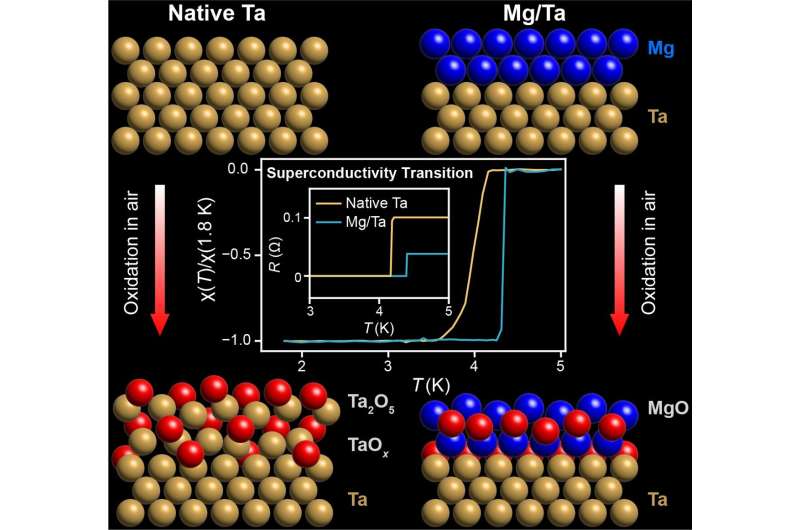Phys.org February 5, 2024
To scale up superconducting quantum circuits based on transmon qubits, substantial enhancements in qubit coherence time is necessary. Tantalum (Ta) has emerged as a promising candidate in this regard. However, amorphous surface Ta oxide layer may introduce dielectric loss limiting the coherence time. A team of researchers in the US (Brookhaven National Laboratory, Pacific Northwest National Laboratory, Princeton University) developed a new approach for suppressing the formation of tantalum oxide using an ultrathin magnesium (Mg) capping layer. They demonstrated that oxide was confined to an extremely thin region directly beneath the Mg/Ta interface, and that the superconducting properties of thin Ta films were improved following the Mg capping, exhibiting sharper and higher-temperature transitions to superconductive and magnetically ordered states. Based on computational modeling they established the atomic-scale mechanistic understanding of the role of the capping layer in protecting Ta from oxidation. According to the researchers their work provides insights into the formation mechanism and functionality of surface tantalum oxide, and new materials design principle and pave the way for the realization of large-scale, high-performance quantum computing systems… read more. TECHNICAL ARTICLE

These molecular diagrams compare the oxidation of native tantalum (Ta)… Credit: Brookhaven National Laboratory.